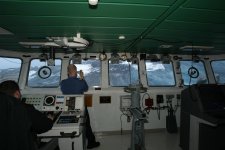- Reaction score
- 1,113
- Points
- 1,160
Visby was created for littoral waters and can be used offshore however the range is not very good and I suspect the endurance is not what we want either because the class requires heavy shore support. Any ship we buy must be able to cross the Atlantic without refueling or at least get us to the Azores. The ship has 4 gas turbines for sprinting and 2 cruise diesels for economical speeds. If on those gas turbines at all they will use that fuel quickly and drive down its range dramatically.So, just trying to wrap my head around this replacement vessel's requirements, if the expectation that this new vessel is to patrol the Grand Banks then the size must increase to accommodate those potential sea states correct? Is this not more of a small frigate as opposed to a corvette? This is no longer replacing MCDVs but a whole new class of vessel which still leaves Canada with the problem of replacing The MCDVs with a similar coastal patrol class. Mission creep?
(also the Visby is good for up to sea state 5)
It seems to me a Corvette or even smaller ship given a proper design can do open ocean, after all Corvettes did a decent job during WW2. I have sailed in MCDV's for 4 cross Atlantic crossings and the highest sea state we hit was 14M, we were fine.



